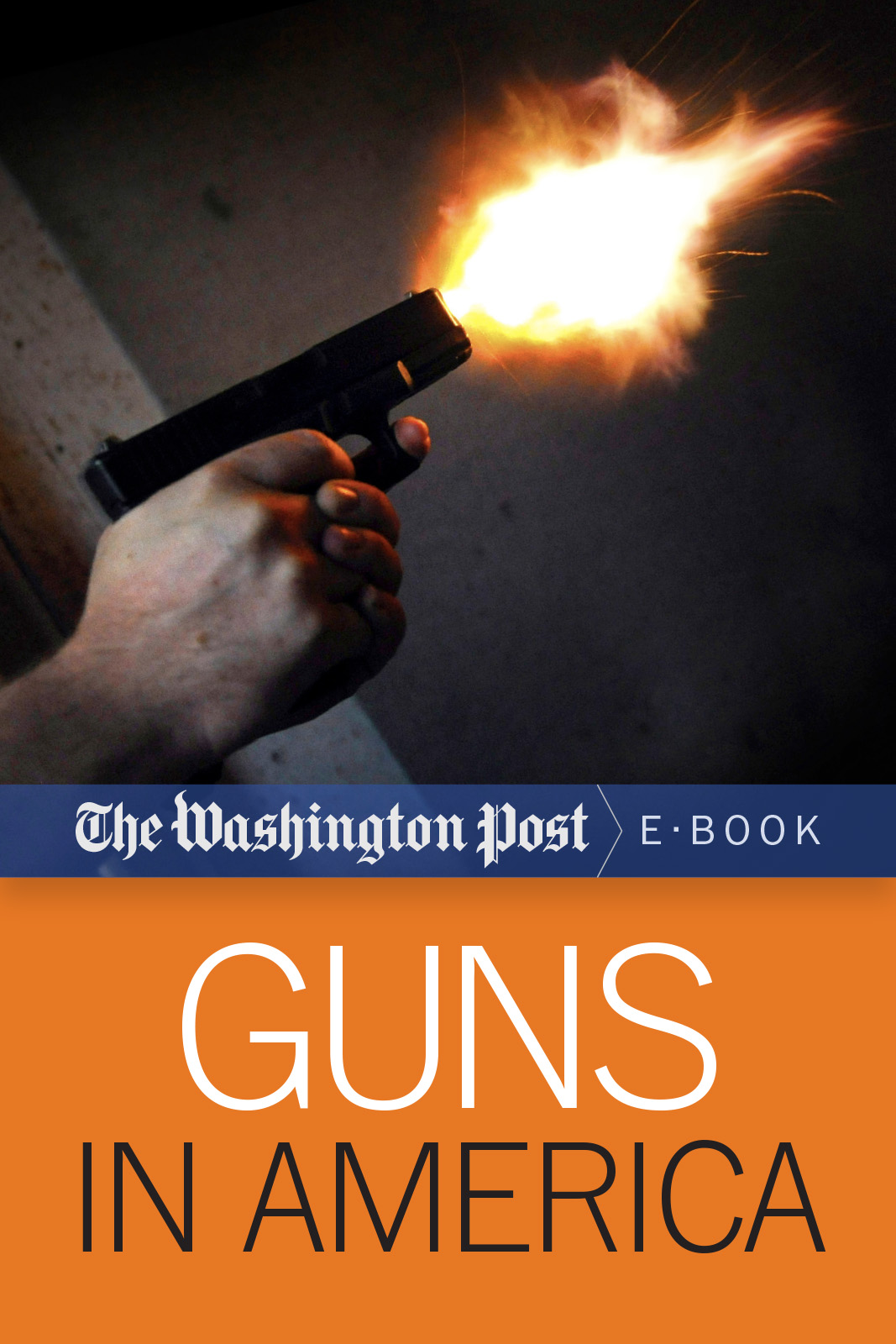All rights reserved, including the right to reproduce this book or portions thereof in any form whatsoever.
For more information, email info@diversionbooks.com.
First Diversion Books edition February 2013.
Introduction
Adam Lanza shot his way into Sandy Hook Elementary School. Armed with a Bushmaster assault rifle, high-capacity magazines and two semi-automatic handguns, he executed 20 first-grade students and six educators. As police closed in, the 20-year-old gunman shot and killed himself.
The massacre in Newtown, Conn., lasted only minutes but catapulted the issue of guns to the forefront of Americas consciousness. More than 300 million firearms are in circulation as of 2012. President Obama has called for new gun control measures. The horrific event touched off an outpouring of questions.
What can be done to keep guns out of the hands of criminals?
How do guns move from store counters to crime scenes?
Have politics compromised our nations gun policies?
After the Newtown killings, The Post examined the long, bloody history of gun control. Based on the past, the fights in Congress will likely be vicious. The National Rifle Association has described its opposition to Obamas plan on guns as the fight of the century. As the story explained, the gun-control and gun-rights groups speak entirely different languages.
In a subsequent story, The Post deconstructed the transformation of the NRA from a marksmanship organization to a feared and unrivaled gun lobby with more than 4 million members. Controversy, as the story noted, is not a problem, but a motivator that drums up support for the groups hard-line interpretation of the Second Amendment.
The Post laid the groundwork for those stories more than two years ago when a team of reporters attempted to answer many of the same questions being asked today. That digging culminated in a series of stories, web documentaries and graphics called The Hidden Life of Guns. This reporting and later stories offer context as Congress and the nation debates guns with an intensity unseen in years.
The coverage explored a hidden world. It brought the public deeper into the issue of guns than anything previously published. It showed the impact of gun sales at local, state and national levels. It explained how the firearms lobby has squelched serious efforts at gun control for nearly two decades. And, it revealed how politics has hamstrung efforts to curb gun violence by the federal Bureau of Alcohol, Tobacco, Firearms, and Explosives.
The fight over the tracing of guns seized at crime scenesthe ATFs chief investigative toolepitomizes the larger political battle.
Gun tracing tracks serial numbers on weapons used in crimes back to the dealer that first sold them. Researchers working with the ATF in the 1990s were surprised to find that a fraction of the nations gun dealers sold most of the traced crime guns.
The publicity put a spotlight on the firearms industry. Gun traces can help identify dealers that, knowingly or not, are selling guns to traffickers and other criminals. In this way, the nations 60,000 dealers are on the front line of crime prevention.
In the early 2000s, the gun lobby asked Congress to make trace data secret. At the time, such information was available through a Freedom of Information Act request under federal law. The industry and the NRA argued that reports about gun traces unfairly tarnished honest dealers. Lawmakers listened. In 2003, they took a rare step and forbid the ATF from publicly disclosing the data. That shielded retailers from lawsuits, halted academic research and ended public scrutiny.
To pierce the newly erected veil of secrecy, The Post gathered its own information on gun traces. The newspaper matched thousands of seized weapons listed in police evidence logs against gun sales records in Maryland. It also analyzed a little known database of guns recovered by police in Virginia. The disparity that researchers documented in the 1990sa small number of dealers account for a majority of guns tracedremained true in the 2000s.
In Virginia, nearly two out of three guns sold since 1998 and recovered by local authorities came from about 1 percent of the states dealers. Guns sold by one of those shops, for example, had a very short time-to-crime, a key ATF marker for potential gun trafficking. More than 70 percent of the guns traced to the Portsmouth shop were recovered by police less than a year after they were sold.
In Maryland, nearly one out of three guns The Post traced to dealers was sold by a shop in Prince Georges County. This store, located in an old house, has been the source of more than 2,500 guns recovered in criminal investigations over 18 years. One in eight guns sold by the shop was recovered in criminal matters by police in the District or Prince Georges County.
Nationwide, The Post also identified the top 12 retail sources of crime guns, a list that last appeared in U.S. newspapers a decade ago.
The ATF is supposed to regulate the gun industry, but, as the Post noted, some say the industry dominates the agency. Unlike the FBI or the Drug Enforcement Administration, the ATF must contend with a powerful lobby that watches its every move and fights any steps taken by the agency to acquire more resources or power.
The NRA said its work has been to protect gun owners constitutional rights and those efforts have not impeded law enforcement. The group has an annual revenue of more than $200 million and for decades been the strongest force shaping the nations gun laws.
Facing such an opponent, the ATF is hamstrung by the politics, the law and bureaucracy. The agency has the same number of agents it had three decades ago. The lack of resources means it can take as long as eight years between inspections of gun dealers. Closing troubled gun stores can take years.
Even then, its not final.
Shops that the agency has tried to shut down have often secured new licenses through relatives, employees, associates or newly formed companies, The Post found. The owner of one Maryland gun store fought the ATFs attempt to revoke his dealers license for nearly two years before a judge upheld the agencys action. Six months later, the owners wife secured her own license to sell guns at the same location.
Because of the politics, the ATF must trace guns by hand using dealers paper records and microfilm. This is in contrast with the 21st-century crime fighting techniques employed by the FBI such as DNA and fingerprint matching that rely on state-of-the art computer programs.
ATF employees use scotch tape and magnifying glasses to piece together aging gun sales logs. This is necessary because the gun lobby has persuaded Congress to prevent ATF from compiling gun ownership records into a searchable database. Computerization, the NRA contends, would constitute a national gun ownership registry and be a forerunner to the governments confiscation of guns in private hands.
The Post stories showed that as U.S. guns fueled drug wars along the nations southwestern border, the ATF quietly advanced a plan to try to clamp down on gun smuggling to Mexico. The initiative would require certain dealers along the southwestern border report to the ATF bulk sales of assault weapons, including AR 15s and AK 47s. The NRA warned its membership in a grassroots alert that the administration was considering an end run around Congress. The plan stalled but was eventually implemented in several states.



















